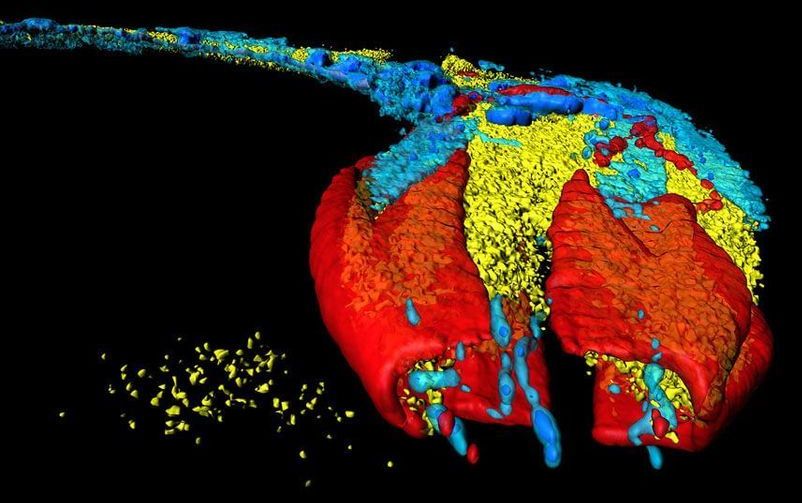We know little about how brains produce happiness or anger. One scientist’s work is helping to explain why, revealing a possible link between sex and violence.




SEX robots that can “breathe” using a robotic chest cavity will are set to be unleashed onto seedy market.
Cloud Climax, UK agent for AI-AITech, says it is making great leaps in the technology of its top of the range model, “Emma”.
The company’s eventual aim is to make the robot move its arms and legs so it can walk.

Self-driving vehicles will lead to a rise in car sex, according to a new study.
People will be more likely to eat, sleep and engage in on-the-road hanky-panky when robot cars become the new normal, according to research published in the most recent issue of the journal Annals of Tourism Research.
“People will be sleeping in their vehicles, which has implications for roadside hotels. And people may be eating in vehicles that function as restaurant pods,” Scott Cohen, who led the study, told Fast Company magazine.

In the past several months, the issue of ensuring a truly equal future for women in society has risen up the agenda of global challenges – whilst at the same time indicators suggest the actual gap is growing globally. From harassment and #metoo to #timesup and the rights to equal pay and equal access in education, the workplace, and the boardroom, women have been succeeding in spotlighting the issues and arguing for their rights. So, as we look to the future, some fundamental questions arise: What is the future of women? Are women’s futures different from men’s futures? How do we proceed in the coming years to embed a gender equality mindset while accounting for the unique challenges women face?
This article draws on insights from our recent book – The Future Reinvented – Reimagining, Life, Society and Business to explore how business and society can adjust to ensure a more positive future for women, focusing on what we consider to be critical agenda issues. We conclude with our advice and dreams for the future of women.
Areas which could benefit significantly from the increased participation of women
As

A solid clarification article in a major newspaper where I point out that the transhumanism movement is vastly different than how Epstein interpreted in in 2011. Transhumanists need to speak up about what their vision of transhumanism is so others and media know what it really is about.
The revelation that convicted sex offender Jeffrey Epstein planned to impregnate 20 women with his sperm in a “DNA seeding” centre left the world feeling sick. But for patrons of a small, but growing, political movement it caused utter chaos.
“This is the largest media coverage we have ever experienced,” says Zoltan Istvan, former presidential candidate and founder of the Transhumanist Party. “But this is the worst type of coverage. Lots of damage control is being done right now.”
The father-of-two has spent the morning taking telephone calls and sending emails to fellow “leaders” of the movement to try and work out some form of publicity crisis management strategy.

Mr. Epstein’s vision reflected his longstanding fascination with what has become known as transhumanism: the science of improving the human population through technologies like genetic engineering and artificial intelligence. Critics have likened transhumanism to a modern-day version of eugenics, the discredited field of improving the human race through controlled breeding.
Mr. Epstein, the accused sex trafficker, was fascinated by eugenics. He told scientists and others of his vision of using his New Mexico ranch to impregnate women.

For a humble, microscopic worm with only 302 neurons, C. elegans has had a lot of firsts. It was the first multicellular animal to have its whole genome sequenced. It was also the spark that lit the connectome fire—the revolutionary idea that mapping the entirety of connections among neurons will unveil secrets of our minds, memory, and consciousness. And if the connectomists are to be believed, a map of individual brains may be the blueprint that will one day hurtle AI into human-level intelligence, or reconstruct an entire human mind in digital form.
More than 30 years ago, a pioneering group of scientists painstakingly traced and reconstructed the roundworm’s neural wiring by hand. The “heroic” effort, unaided by modern computers and brain-mapping algorithms, resulted in the first connectome in 1986.
Yet the “mind of the worm” map had significant lapses. For one, it only focused on one sex, the hermaphrodite—a “female” equivalent that can self-fertilize. This makes it hard to tell which connections are universal for the species, and which are dependent on sex and reproduction. For another, because the effort relied entirely on human beings who get tired, bored, and mess up, the map wasn’t entirely accurate. Even with multiple rounds of subsequent refinements, errors could linger, which would royally screw up any interpretation of results using these maps.
